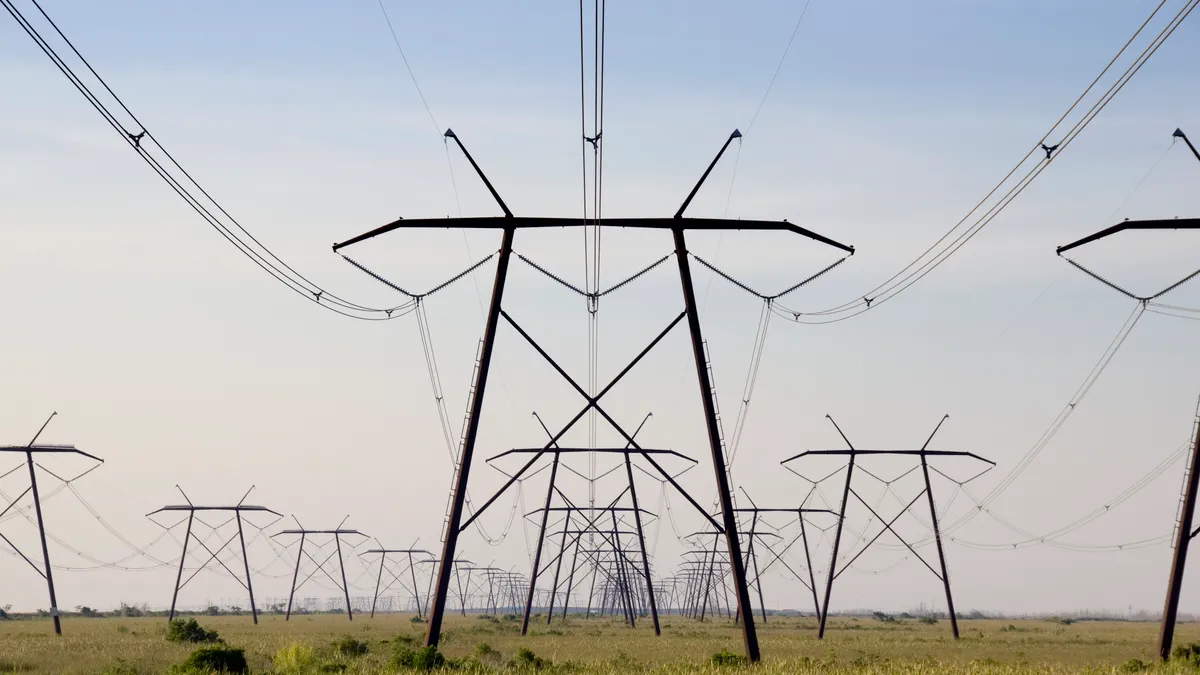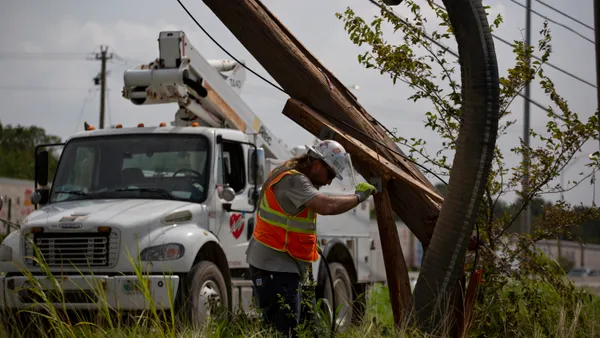As the proliferation of distributed energy resources gains momentum across the U.S., utility leaders will need to take a proactive approach to deal with their growth—or get left behind in the aftermath.
One hurdle facing utility sector is the lack of consensus on how to seize the opportunity to harness and operate distributed energy resources.
Three-fifths (60%) of utility professionals surveyed by Utility Dive’s State of the Electric Utility 2016 said their utilities should partner with third party providers to deploy DERs, but almost as many (59%) said the opportunity is in owning, operating, and rate-basing DERs as a regulated utility.
This is a clear indication utilities “are still weighing a variety of options for DER-centric business models and may even be pursuing multiple opportunities at the same time,” the survey concluded.
Now, a recently released white paper from the Smart Electric Power Association (SEPA) and consultant Black & Veatch has outlined five steps to help utility executives and professionals to chart a course to prepare for the inevitable integration of DERs.
“The first lesson is that the old way of planning must be enhanced to include DERs,” B&V Managing Director and paper co-author Andrew Colman told Utility Dive. “That may not be to the utility’s liking but if the utility is not prepared to deal with DERs, it is going to have its business disrupted.”
“DERs present quite a complex challenge to utilities,” agreed SEPA Research Manager and paper co-author Daisy Chung. “Without a complex set of solutions, it is hard to get to the level utilities need to be at.”
Colman and Chung conducted extensive interviews with five major utilities at differing stages of their approach to DERs. In the paper, they report their conclusions and present a five step process derived from the interviews.
“The five steps can help any utility figure out what they need to be when they grow up and how they can turn DERs into an opportunity,” Colman said. “Whatever the utility profile, these five steps will help it plan for its specific situation. If it doesn’t go through the steps, there is a chance it will miss something and it could cost them.”
A whole new kind of planning
While utilities may see the opportunity to leverage DERs, the industry is still in the very early stages of figuring out exactly how to do it.
“To the authors’ knowledge, no utility has yet put into practice a comprehensive framework for utility planning that incorporates the far-reaching impacts of DER growth,” the white paper reports.
So far, DERs seem little more than “a can of worms” to many utilities, Chung said. “It is important that they know peer utilities have started using DERs successfully and that taking on DERs is not stepping into the complete unknown.”
Driven by policy mandates and customer demand, utilities have begun to realize the choice of dealing with DERs is being taken out of their hands.
“This paper asks utilities how they are going to plan for the reality of customers knocking at their door, demanding access to DERs,” Colman said.
Traditional utility planning doesn’t work for DERs, the white paper reports.
With DERs, customers deliver power to utilities as well as receive power from them. The three indices that measure the distribution system’s reliability performance, System Average Interruption Frequency Index (SAIFI), System Average Interruption Duration Index (SAIDI), and Customer Average Interruption Duration Index (CAIDI), are less relevant when the system becomes bi-directional.
This challenges traditional distribution planning assumptions: Legacy distribution equipment was not designed for bi-directional power flows, while load forecasting becomes more complicated when customer output as well as demand must be considered. These issues raise new questions about the serviceability of distribution circuits and feeders—and there are few answers.
However, the Colman and Chung interviews revealed a wide ranging set of changes already underway. Some utilities are developing methods and tools for assessing DER hosting capacity on their distribution circuits and for quantifying DERs’ costs and benefits at different locations. They are also beginning to think about rate and incentive design to guide DER growth to preferred interconnection locations. And they are asking how they can best monitor and control the DER assets on their systems.
Leading utilities are also creating new teams to understand how to do the necessary planning, and developing new modeling software that can see and understand DERs on the system. If they cannot maintain their previous control on reliability, they want more insight into DER performance.
Based on what came out of the interviews, Chung said, “we urge utilities to think more in terms of a complete vision of distribution planning. Too many have a silo-ized instead of a holistic perspective of what the distribution system can look like.”
Even so, there are many unanswered questions for utilities with respect to DERs, the paper noted. These questions revolve around ownership and control of DER assets, as well as procurement and how DER markets will function. Other questions include how to protect IT infrastructure and and customer data, how utilities fit into traditional rate design and regulation, and whether or not utility staff, regulators, customers and policy makers will drive DER growth, or hinder it.
The emerging trend
An emerging trend in the utility sector is the increasing interest from consumers to control their energy use and energy sources, according to the white paper. Consumers see in that control the opportunity to reduce their electric bills, have some “energy independence” and freedom from emergency grid failures, and have cleaner energy and new technology options.
Solar developers, energy efficiency installers, electric vehicle (EV) manufacturers, smart home technology advocates, software vendors and environmental groups have helped spur that customer interest in control. Many of these players are investing significant resources into marketing, policy advocacy and customer outreach, promising DERs will be the “next big thing.”
Technology advances back up the claim, the paper reports. Costs are declining and performance is improving, as PV efficiency, battery durability, and sensor capabilities continue to leap ahead, and new computing power is allowing smart technologies to learn in place.
These trends are not expected to slow down, the white paper points out. “Utilities need to develop standards, electric rate structures and monitoring/control systems to manage and/or influence these DERs, which is a large challenge in itself.”
All five utilities interviewed said the growing volume of DER interconnection requests was a key driver for proactive DER planning. “Some utilities are now reaching penetration levels at which the need to address these ‘operational necessity’ issues has become critical to maintain reliability,” the white paper reports.
At the same time, some legislators and regulators are “instituting policies and proceedings to engage utilities in DER deployment and planning,” the paper adds.
Three of the five utilities interviewed face mandates that require DER planning, some with deadlines as soon as this year.
Two utilities said they are not doing distribution system planning because of DER mandates, but because of financial penalties for not meeting distribution system reliability (SAIDI and SAIFI) target numbers. Proactive DER integration planning is necessary, the paper reports, “to avoid the penalties associated with outages or service deterioration, which may potentially be caused by DERs.”
Multiple market drivers make increasing DER penetrations likely, according to the paper, and policies and regulations are emerging to support utilities in dealing with it.
New and better tools, methods, and utility planning practices “are being developed and adopted rapidly,” the white paper adds.
Quantifying DERs’ value to the distribution system and forecasting where on the system they will be of the most value “will become a standard part of the utility planning process in the near future.”
New ways to work with DER vendors and new utility business models for procuring and integrating DER assets will likely lead to utilities being able to use DERs to defer conventional distribution system investments, the paper predicted.
It will be up to utilities and their regulators to see that the significant necessary investments in new hardware, software, and human capital are being made “to enable the DER-rich grid of tomorrow,” the white paper concludes.
The five-step blueprint for utilities
Utilities should not wait for regulators to make DERs inevitable, Colman said. “The more progressive a utility is in the way it thinks about these things, the better positioned it will be to make a profit and serve its customers or its members. There is no need to wait.”
Forward-thinking utilities are beginning to understand that DER solutions for their customers can be solutions for their grids, Chung agreed. “Utilities can learn how to use DERs in a way that may help to satisfy customer demand and defer infrastructure capital investment.”
Utilities also need to stop looking at the system from the traditional top-down utility perspective, Colman said, and instead look at DERs from the perspective of their customers. “Those who stick to the old way of doing things are doomed to suffer in the end.”
The first step in the distribution system planning process described in the white paper is a comprehensive system assessment from the customer’s point of view. The utility not only needs to forecast load, but also the technical, economic, and achievable potential for DER deployment, as well as the likely customer demand.
The second step is to estimate the derived net load and DER profile’s impact on the transmission and distribution systems. New dynamic distribution system modelling is already being used in this context.
The third step is applying the analysis to the utility’s bulk power generation and transmission system so the organization will have an understanding of the impacts on the distribution system.
The fourth step is a comprehensive assessment of the forecast distribution system plans on the utility’s financials, rates, and regulatory responsibilities. That would include the locational costs and benefits of DERs, how they might defer or avoid traditional investments, what costs, benefits, and rate impacts DER deployment might have, and what new policies would be needed to get DERs at the right place and right time.
Finally, the white paper adds, the utility needs to develop a strategy and operationalize that strategy.
Among the most common intermediate approaches to distribution planning to date have been utilities’ efforts to map their systems and identify the more (and less) desirable places to interconnect DERs, Chung said. “That is just a bandage compared to a holistic approach.”
“Customers are going to do what they are going to do wherever they are on the system,” Colman added.
One utility, guided by its integrated resource plan, had certain expectations for its distribution system, he recalled. “When it started considering the customer’s point of view, its forecast for DERs increased significantly and it went back to the five-step planning process.”
As utilities start seeing and acting on the demand for DERs, they will open up opportunities to harness those resources. The utility that Colman described realized the greater volume of EVs on the grid meant its incentives for off-peak charging needed to improve and building EV charging infrastructure offered profit potential.
“They began to see the opportunities in changing rates and working with vendors,” Colman said. “The key was going through the five step process to open up their minds to what the DER future is going to be.”






















